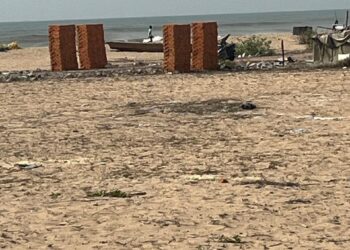The 25th National Technology Day was celebrated with great enthusiasm on May 11, by CSIR-Structural Engineering Research Centre (CSIR-SERC) and CSIR Madras Complex (CMC). This day has been celebrated since 1999 to mark India’s three significant technological achievements – Pokhran nuclear tests of 1998, first flight of the indigenously designed ‘Hansa’ lightweight aircraft and the development of the surface to air missile ‘Trishul’.
The function was presided over by Dr.N.Anandavalli – Director of CSIR-SERC and Coordinating Director of CMC. The chief guest was Dr.V.Thiruppugazh – Chairman (Advisory Committee on Mitigation and Management of Floods in Chennai Metro).
Referring to this year’s theme, ‘School to Startups-Igniting Young Minds to Innovate’, Dr. Anandavalli spoke on the significance of innovation and creativity in science and technology, on the technological interventions, and the sustainable technologies developed by CSIR-SERC and CMC during the past year.
Dr.J.Rajasankar – Chief Scientist of CSIR-SERC, introduced the chief guest to the audience. Dr. Thiruppugazh delivered the National Technology Day lecture on ‘Transfer of Technology from Lab to Land for Disaster Management’. He spoke about the global trends of disasters and pointed out that disasters are increasing due to factors such as population, concentration of assets, climate change and urbanisation. He pointed out that there is an increasing trend of hydro-meteorological disasters and climate change induced extreme weather events. Briefing on the major disasters in India such as Latur earthquake 1993, Orissa super cyclone, Gujarat earthquake 2001 and Indian ocean tsunami 2004, he pointed out that the lack of technology, sophisticated equipment, early warning systems and communication were the major challenges in dealing with these disasters.
He also referred to various initiatives of the government for mitigation and prevention of disasters such as The Gujarat State Disaster Management Act, 2003; Disaster Management Act, 2005 of Govt. of India, setting up of National Disaster Management Authority (NDMA), State Disaster Management Authorities (SDMAs) and National Disaster Response Force (NDRF). He also discussed the need for a technology driven approach to deal with disasters – effective use of science and technology, adopting best global technologies, procurement of best and most appropriate equipment, disaster information system, use of best technology practices, use of drones, big data techniques, etc. He mentioned that most of our responses to disasters are post-disaster interventions and discussed the need to focus on pre-disaster mitigation and prevention. He also stressed on the importance of training and capacity building, standardisation and compatibility, importance of principles, focus on need-based research and availability of quality data.
Dr.G.S.Palani, Chief Scientist, CSIR-SERC briefed on the CSIR’s One Week One Lab (OWOL) campaign and mentioned that the OWOL campaign showcases the legacy, exclusive innovations and technological breakthroughs of each CSIR laboratory.










